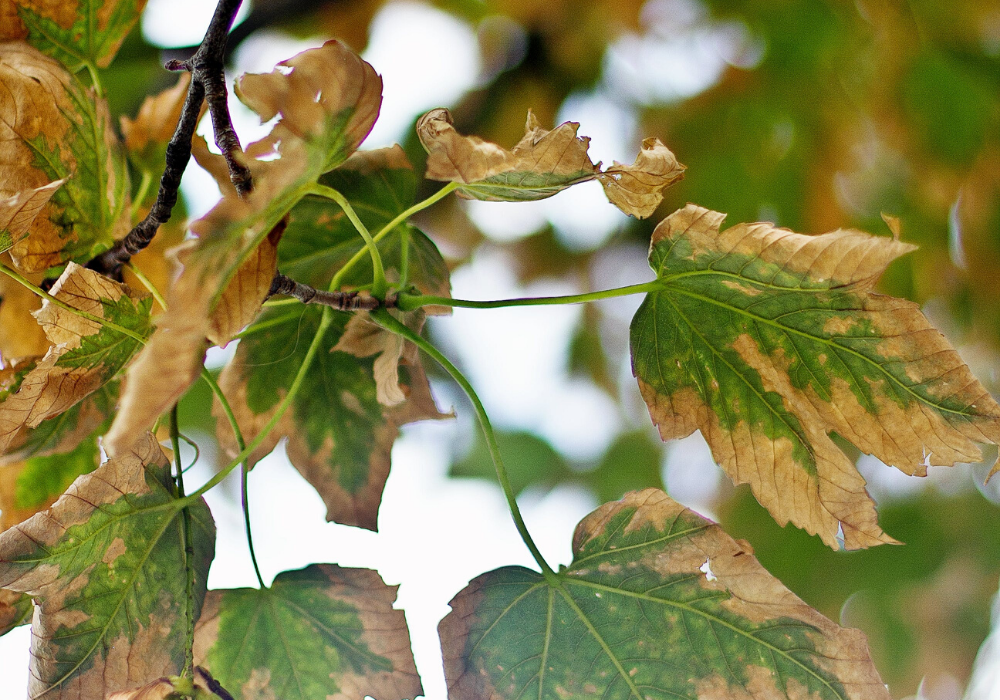Here in Maryland, we get the pleasure of experiencing all four seasons in their glory. But with that comes some considerations when it comes to our landscaping. Seeing as how Nelson tree specialist is just that, a tree specialist, we thought it would be appropriate to talk about the changes trees go through in the winter. More specifically, why and when trees lose their leaves.

Why Do Trees Lose Their Leaves?
Some of these reasons might seem quite obvious, like temperature and hours of sunlight in the day. But there are other reasons which have just as much significance but are tucked away within the trees themselves.
Moisture and Energy
Trees that lose their leaves, or deciduous trees, do so in order to conserve moisture and energy. You might be thinking, “But, the ground is always wet in the winter, so why would the tree need to conserve its moisture.” And yes, you are right. The ground is usually more wet in the winter from snowmelt and the lower temperature not encouraging evaporation. But that is just on the surface. Underground, the soil is likely frozen prohibiting the roots from absorbing moisture. Also, the air is much dryer during the winter, the days are shorter, and there is much less sunlight then in the other months.
It’s the leaves’ job to absorb moisture and sunlight from the atmosphere. They can’t do that if there is no moisture or sunlight. It would take more energy for the tree to keep the leaves alive than the leaves would be able to produce. That would be and losing battle for the tree.
Transpiration
We are all likely familiar with the concept of trees absorbing carbon dioxide and releasing oxygen. But what you may find surprising is that along with the oxygen particles, the leaves also release water vapor. This is called transpiration. During the winter, if the leaves were still green an attached to the tree, transpiration would continue on. This release of water vapor coupled with the inability to absorb water from the ground or the air would essentially dehydrate the tree.
The Abscission Zone
When the tree starts to put out more energy to its leaves then its leaves are bringing in, that’s when it forms something called an abscission layer. the abscission layer is a thin wall of cells that the tree develops between the stem in the base of the leaf. This acts as a protective layer for the tree and stops any transfer of nutrients to and from the leaves. That’s why deciduous trees drop their leaves.
When Do Trees Lose Their Leaves?
When they lose their leaves all depends on a few of factors:
- species
- environment
- stress
These factors play a role on the chemical signals that the tree gives out to the leaves and will help determine the speed and timing of believes falling off.
Species
Now, obviously there are some trees that don’t lose their leaves at all. These are mostly Evergreens or trees with more hardy leaves. But the leaves of some species, like some types of oaks, will turn color but never fall off because the tree never fully forms an abscission layer.
Environment
Climate factors such as temperatures, time of first frost, and winds can all play a role in when trees shed their leaves. Climate plays a role in all functions of trees including blooming and fruiting as well. This is why when there is an unseasonable warm or cold front in the spring, it can cause our coveted cherry blossoms to bloom early or late. You’ll also notice that trees that are kept inside or in green houses where the temperature is warmer and the humidity levels are more regulated will generally not lose their leaves. This is common practice for manipulating growth cycles of crops.
Stress
Environmental stress is something trees would have to cope with anyway, but there are also man-made stressors that they must contend with.
Some things that will all play a factor in when trees lose their leaves are:
- herbicides
- air pollution
- salt from ice-melt
- soil pollution from road runoff water
In almost every case, the introduction of an adverse factor will cause the tree to lose its leaves earlier and regrow its leaves later. This results in a shortened period of time in which the tree can absorb energy through its leaves and therefore its growth may be stunted.
This is by no means an exhaustive list. It serves as a general guide to when and why trees lose their leaves. If you notice any of your trees changing color or losing their leaves earlier than usual, call Nelson Tree Specialist. We were a team of ISA Certified Arborist’s and are trained to diagnose and treat your trees and landscaping.
